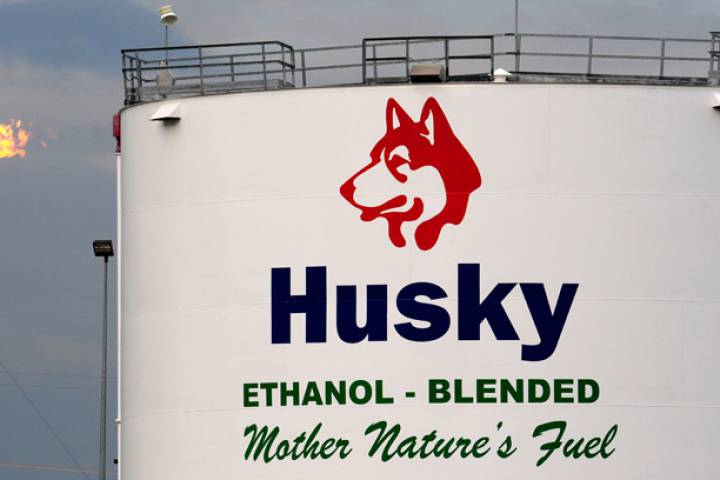Deep price discounts for western Canadian heavy crude have convinced Husky Energy Inc. to reduce production from its oilsands operations.

But unlike Calgary-based rival Cenovus Energy Inc., which temporarily throttled back oilsands output in the first quarter because of low prices, Husky says it is cutting output because it can make more money by buying “distressed” barrels from other producers.
READ MORE: Cenovus Energy posts $914M loss, contemplates slowing new oilsands project
CEO Rob Peabody said Husky cut back heavy oil production by about 5,000 barrels per day in the first quarter and substituted mainly blended bitumen bought from other Alberta oilsands companies to send to its U.S. refineries in Ohio and Wisconsin or to the refining complex on the U.S. Gulf Coast.
“The reason was we could make more money using the capacity we had to pick up other barrels that were sitting in Alberta that were quite distressed,” he said on a conference call.
“There were barrels that people were trying to send down pipelines that just didn’t get allocated pipeline space and they really had no place to put them and they didn’t have storage. That was just such a compelling opportunity rather than just producing our own production.”
READ MORE: Explosion at Husky refinery in Wisconsin, multiple injuries reported
The strategy illustrates how companies are coping with Western Canadian Select bitumen blend oil prices that have largely failed to keep up with higher prices for New York-traded West Texas Intermediate, leading to wider-than-usual differences between the two.
The trend is blamed on tight pipeline capacity as uncertainty continues to plague major projects. The Keystone XL project from Alberta to Texas has been delayed, the Energy East line to Quebec and New Brunswick was cancelled and the future of an expanded Trans Mountain line to Vancouver is in doubt.
READ MORE: Kinder Morgan CEO says Trans Mountain pipeline may be ‘untenable’
On Monday, a judge in Minnesota recommended that Enbridge Inc.’s Line 3 pipeline replacement project follow its existing route across the state rather than the company’s preferred route, a recommendation that Enbridge says it will fight in advance of a regulatory ruling expected in June.
With the ability to refine and upgrade crude in Canada and 75,000 barrels per day of committed capacity on the existing Keystone pipeline, Husky says it can grow its heavy oil production without exposure to the WCS-WTI discounts until at least 2021.
On Thursday, it announced it would reduce its production guidance for the year by about 10,000 barrels of oil equivalent per day to about 335,000 boe/d to account for lower heavy oil production, an advanced schedule for maintenance at its Tucker oilsands project and a slower ramp up in liquids-rich natural gas output from its BD Project in Indonesia.
- McLean accuses Calgary third-party advertiser of ‘whipping votes’ in favour of rezoning bylaw
- Canadian curler Chelsea Carey says don’t compare me to Jennifer Jones
- Firefighters battle blaze at vacant house in northwest Calgary
- 7 sent to hospital after carbon monoxide poisoning incident in northwest Calgary
It said production in the three months ended March 31 fell by about 10 per cent to 300,400 boe/d compared to the first quarter of 2017. Its crude oil production in the Atlantic region fell by about 14 per cent due to the 10-day suspension of its SeaRose floating production, storage and offloading vessel in January after an investigation into its response to a close call with an iceberg.
READ MORE: Cenovus cuts oilsands production due to price differential, pipeline constraints
Tough times in Western Canada means there are plenty of bargain assets coming up for sale, Peabody said on the call, citing the company’s purchase of the 50,000-barrel-per-day Superior refinery in Wisconsin last year for US$435 million as an example of the size of purchase Husky will consider.
Husky cited better business conditions in March when it restored the shareholder dividend it eliminated in 2016.
On Thursday, it reported first-quarter profit of $248 million or 24 cents per share, up from $71 million, or six cents per share, a year ago. It beat analyst expectations for 22 cents per share, according to Thomson Reuters.










Comments